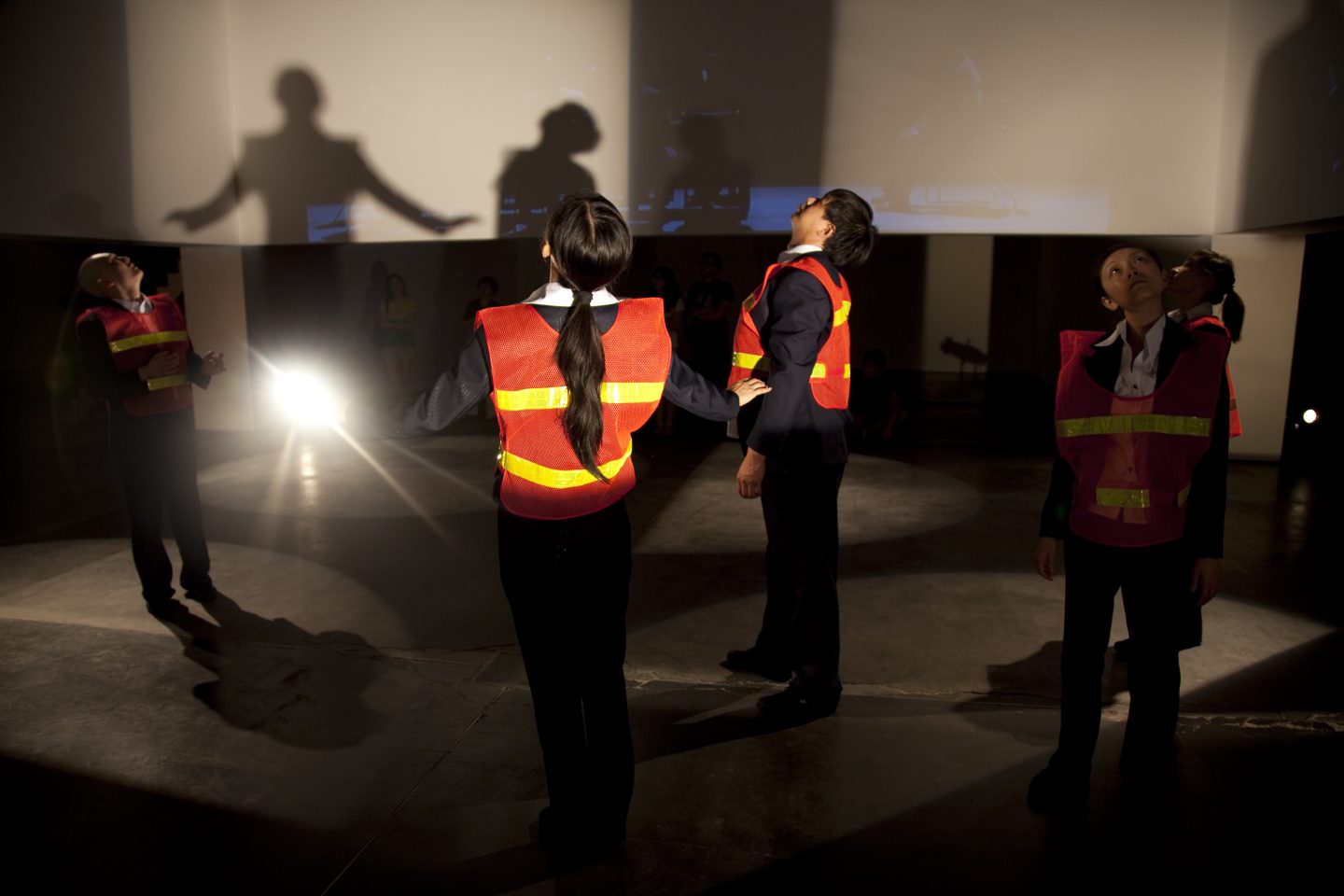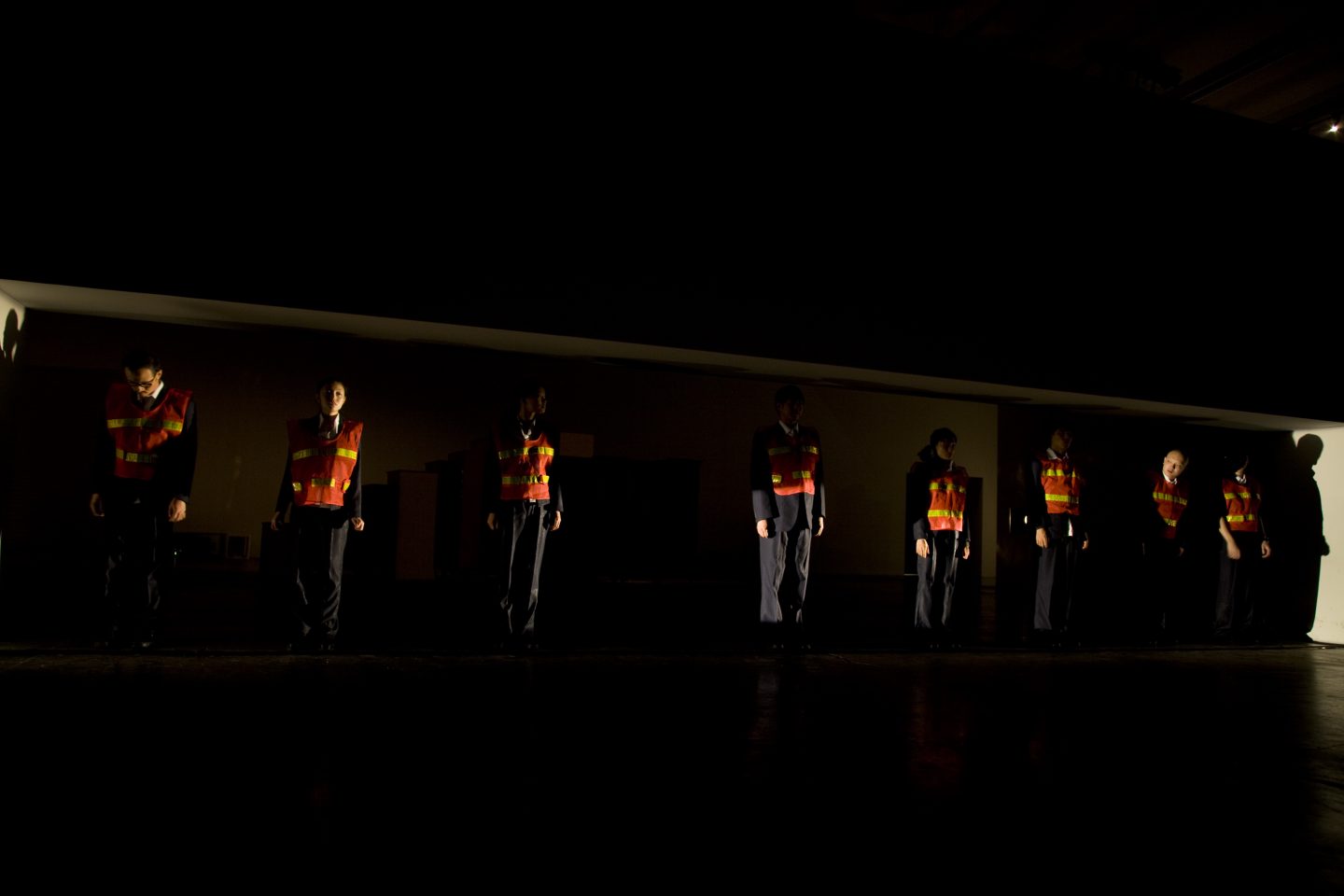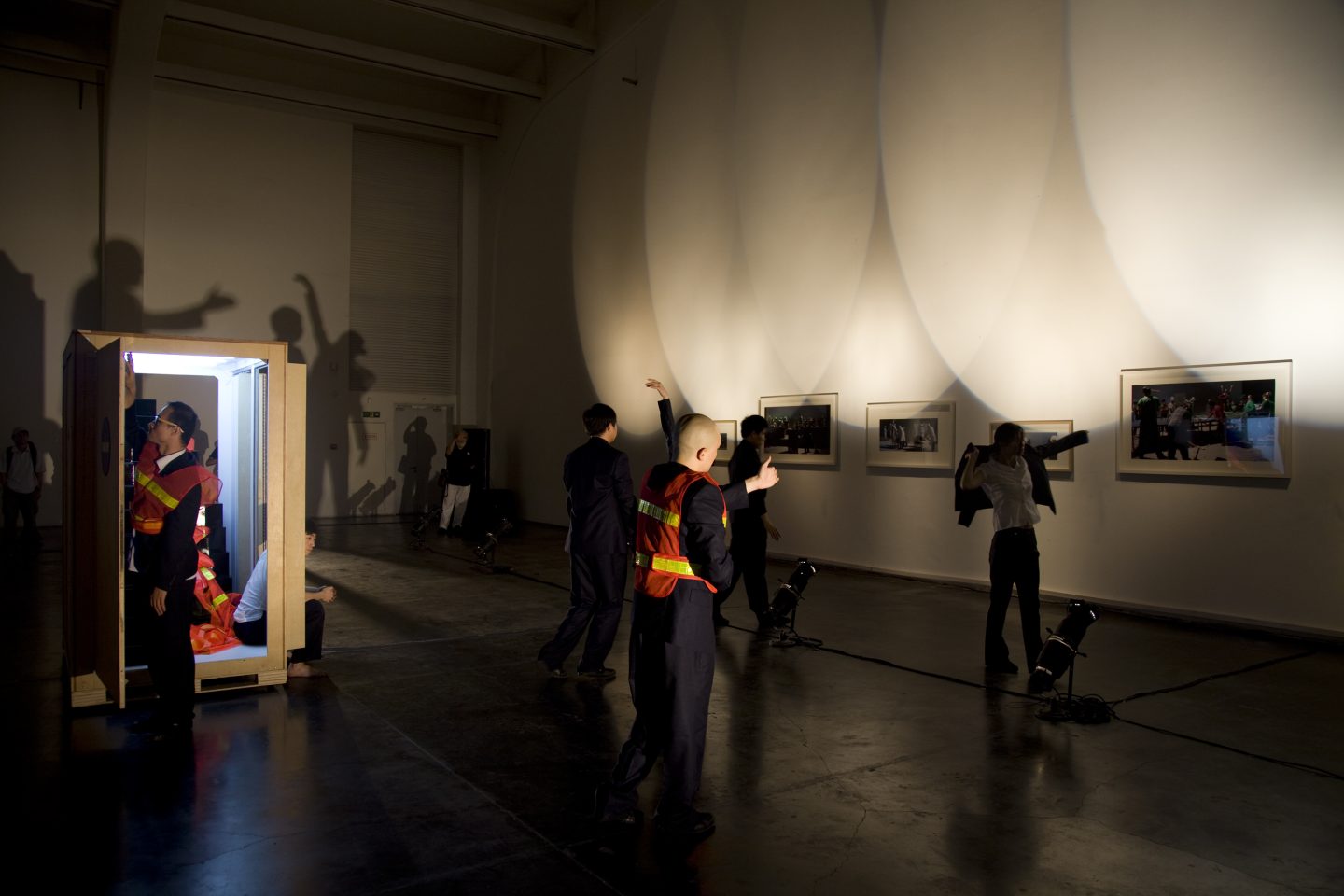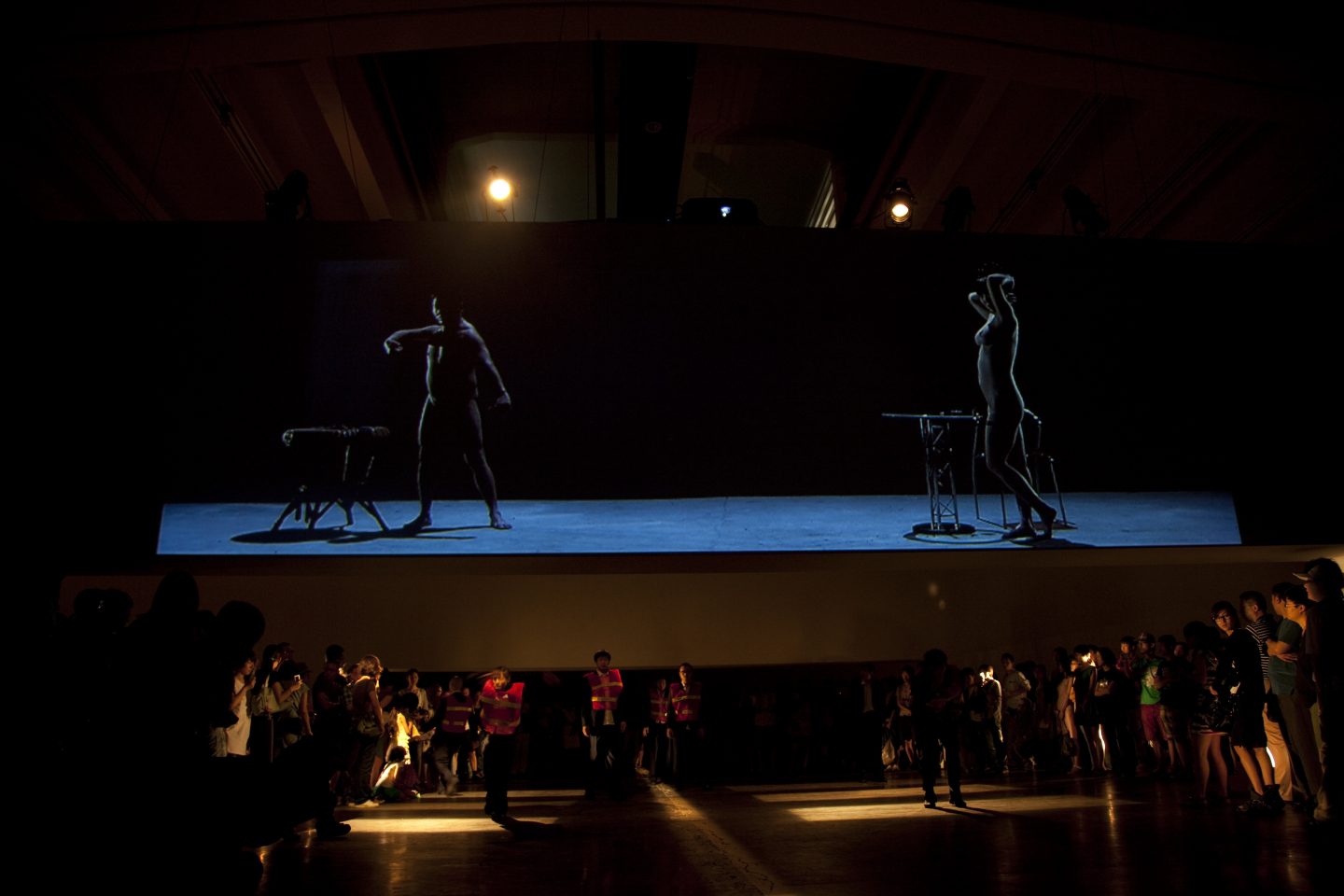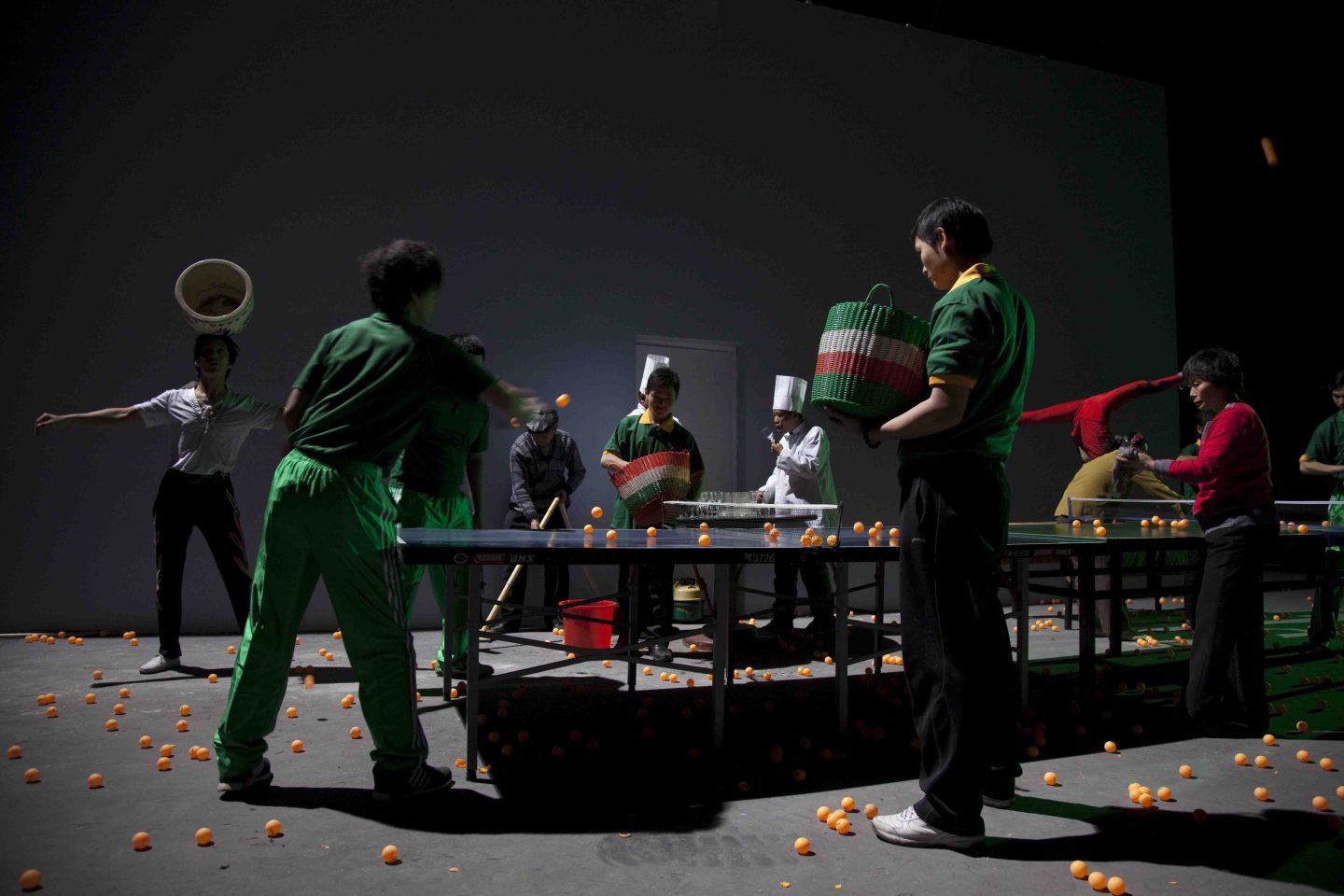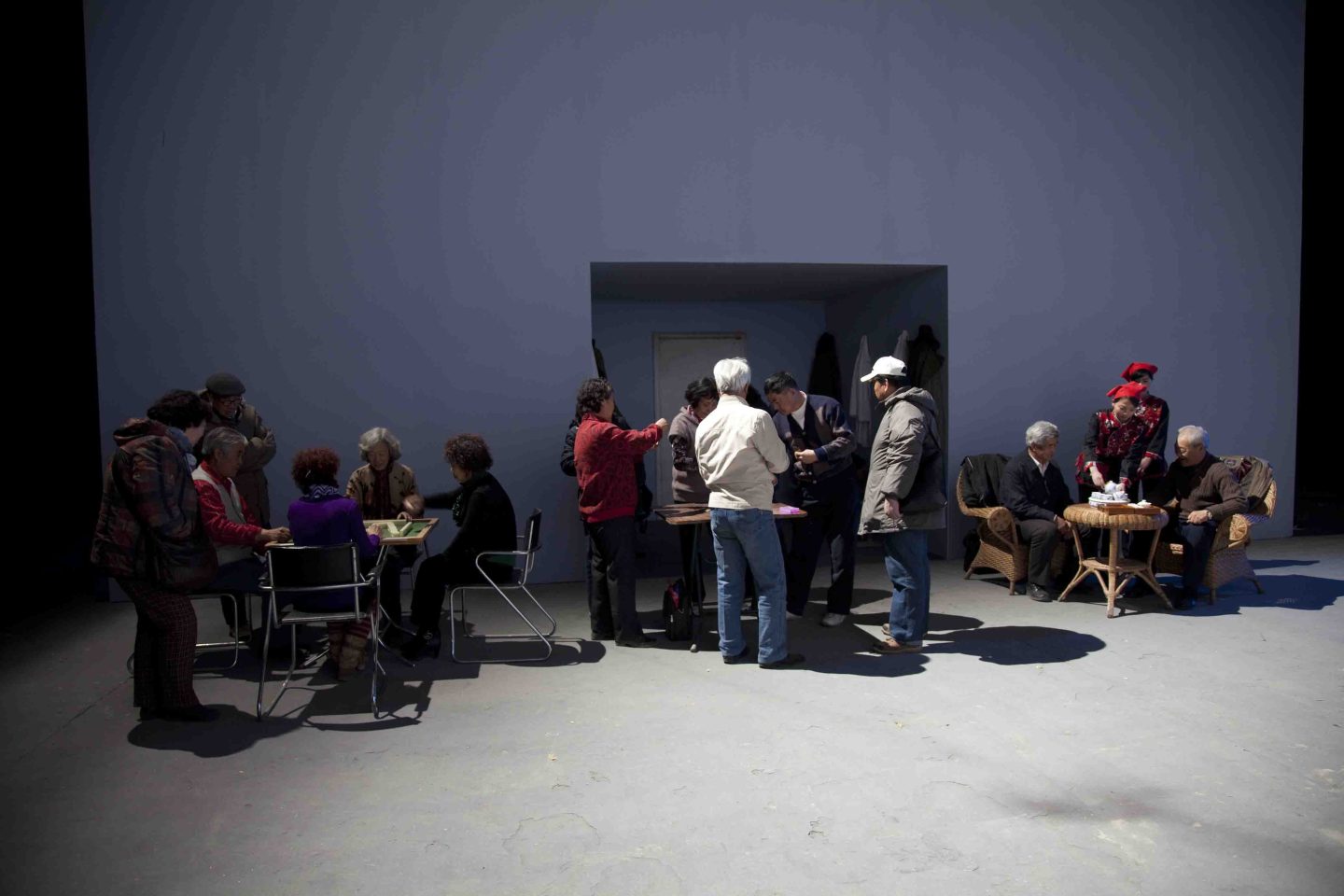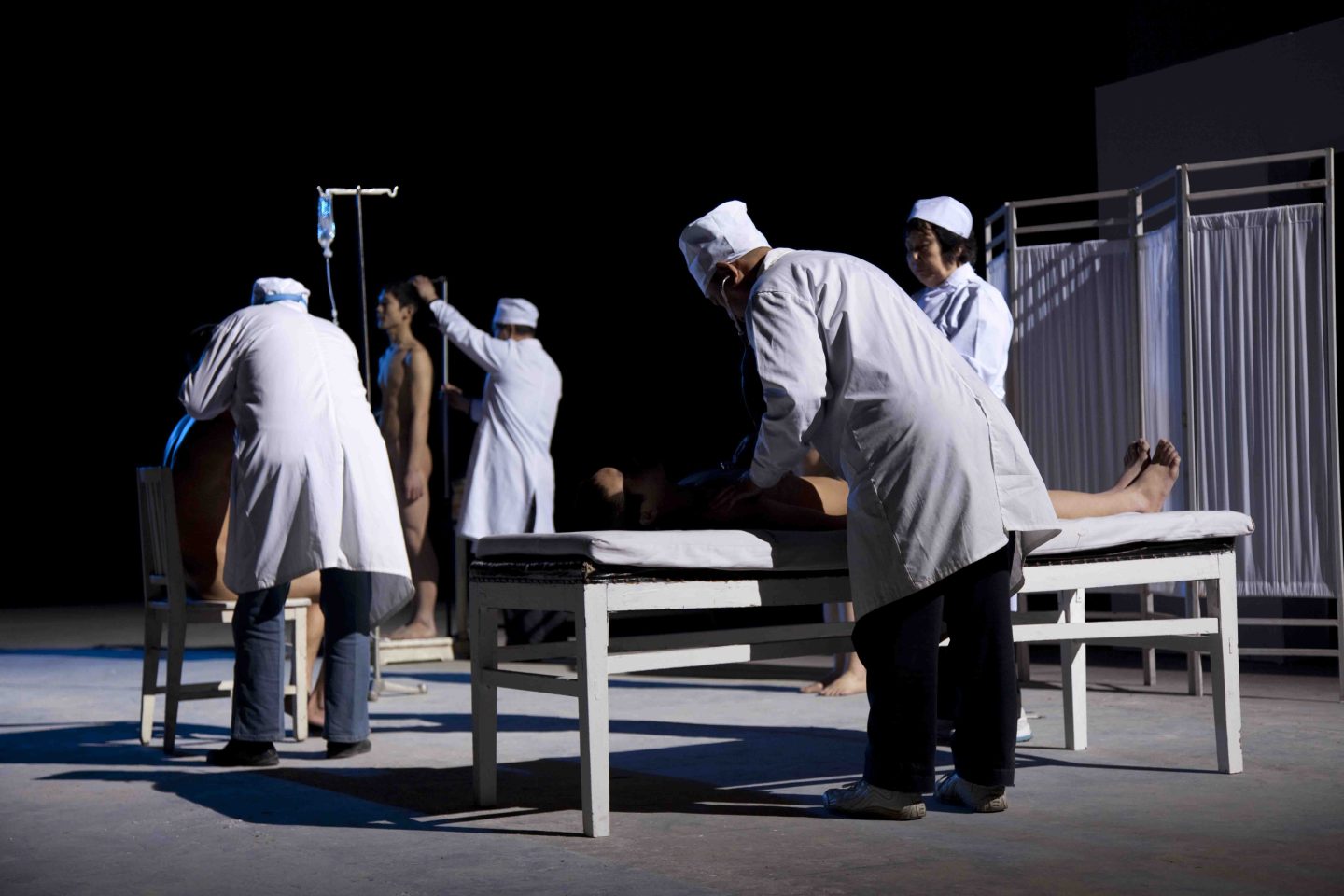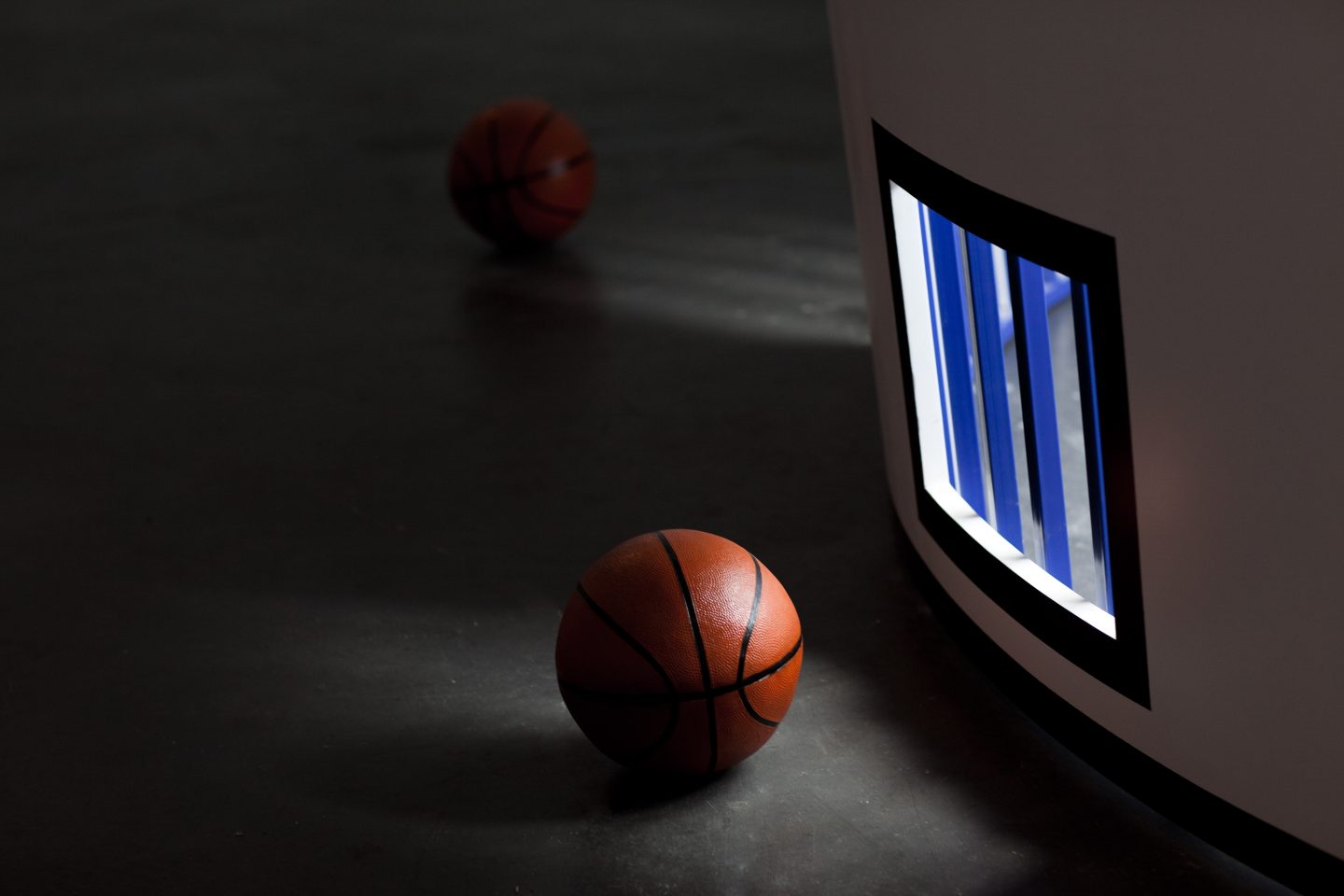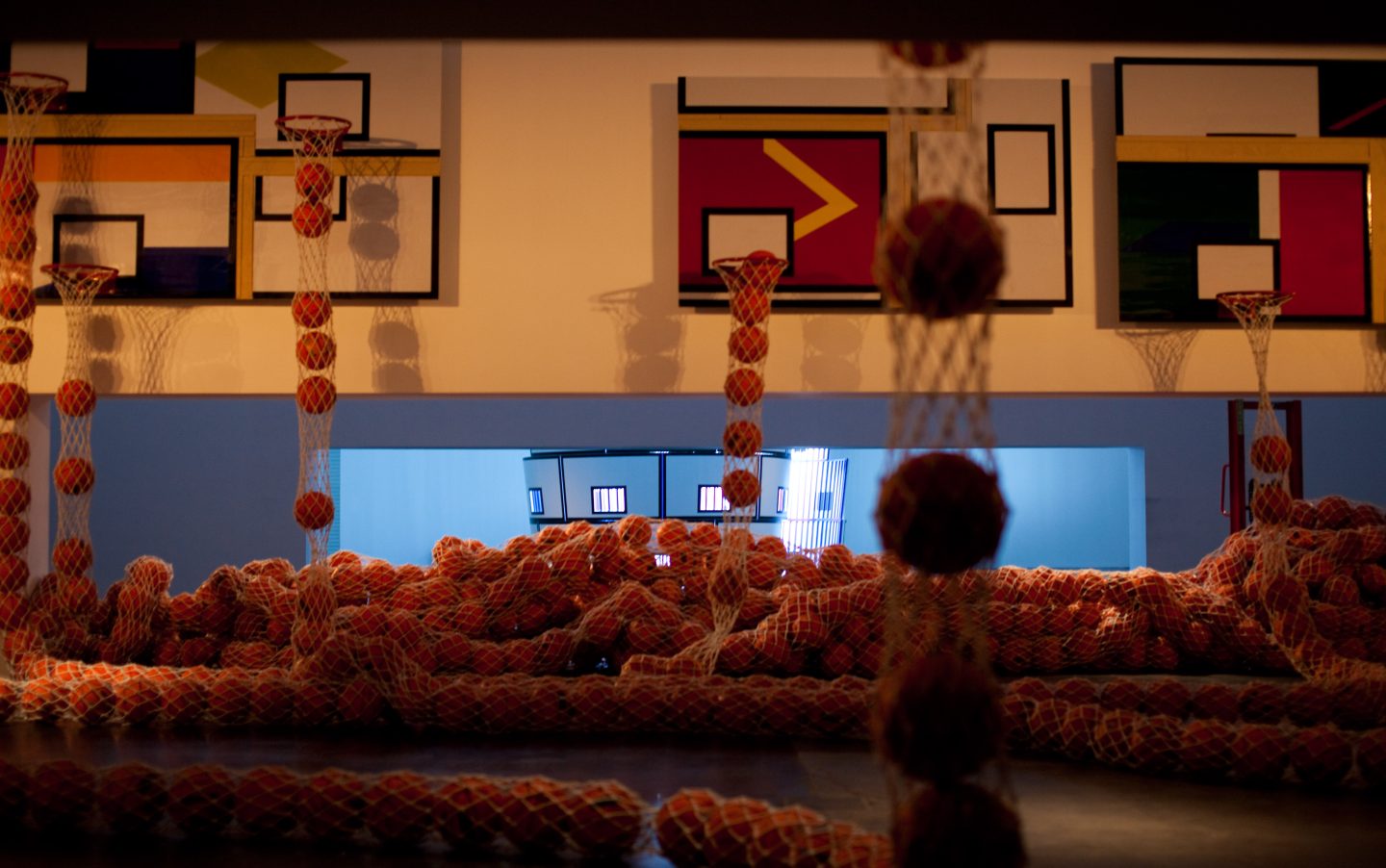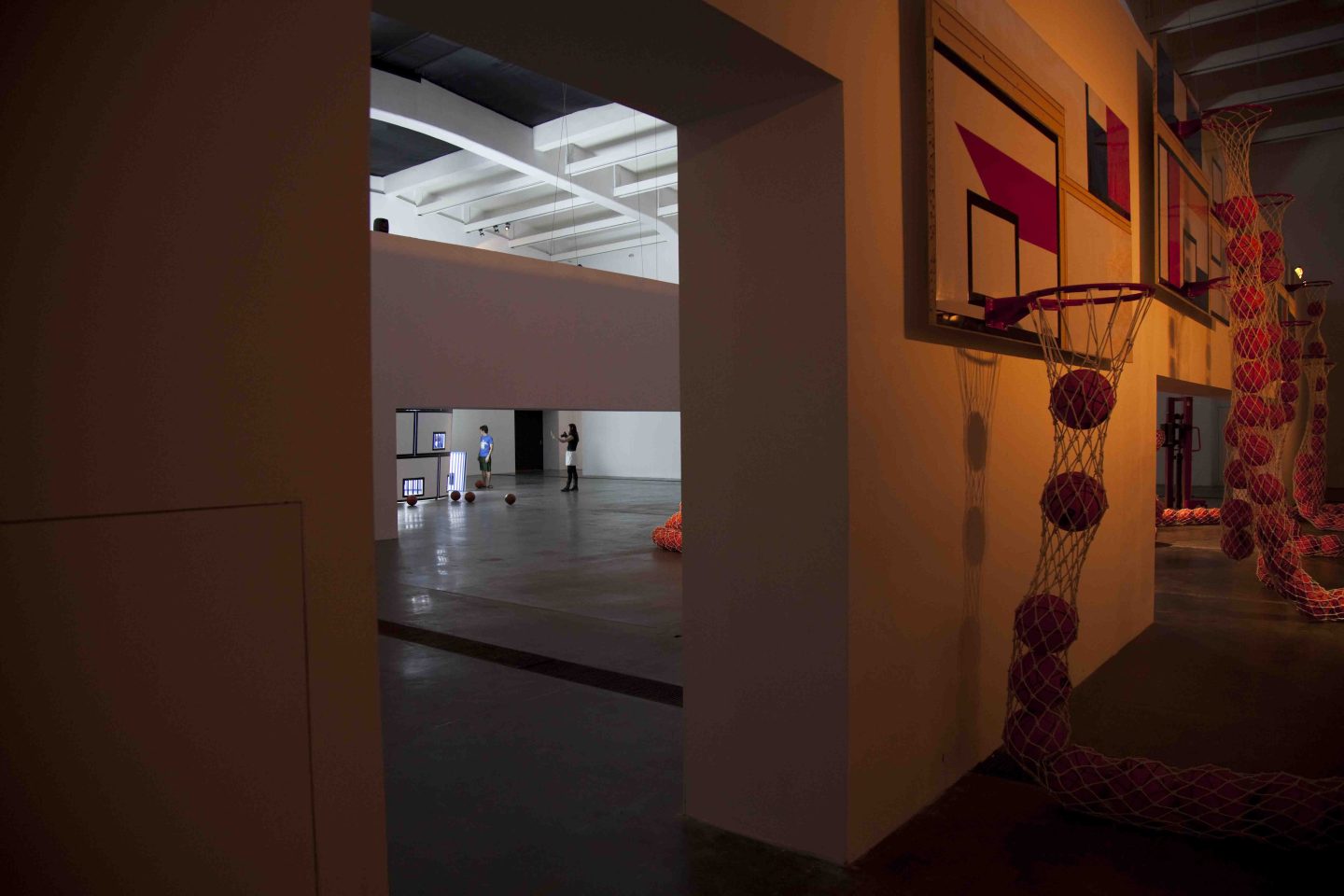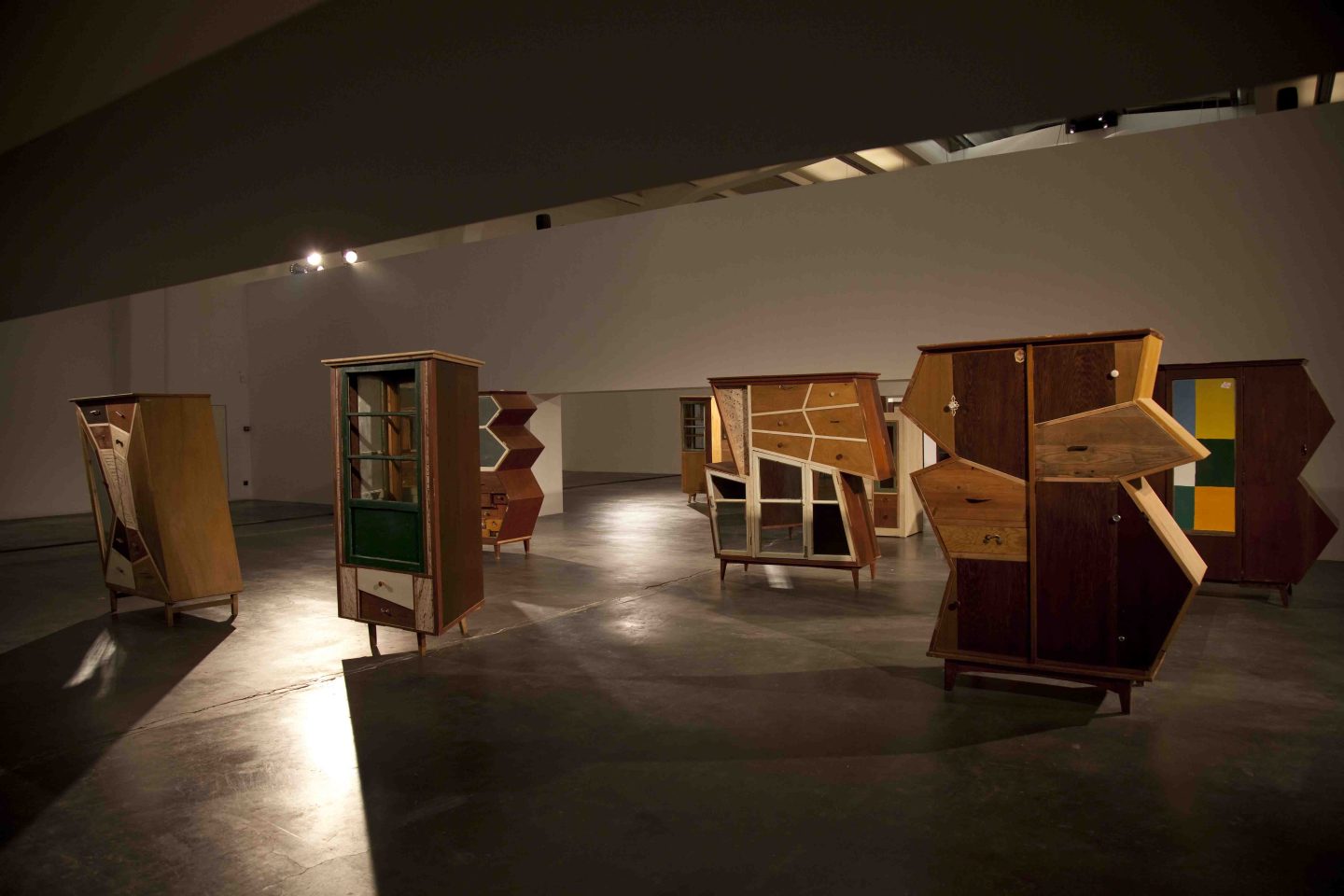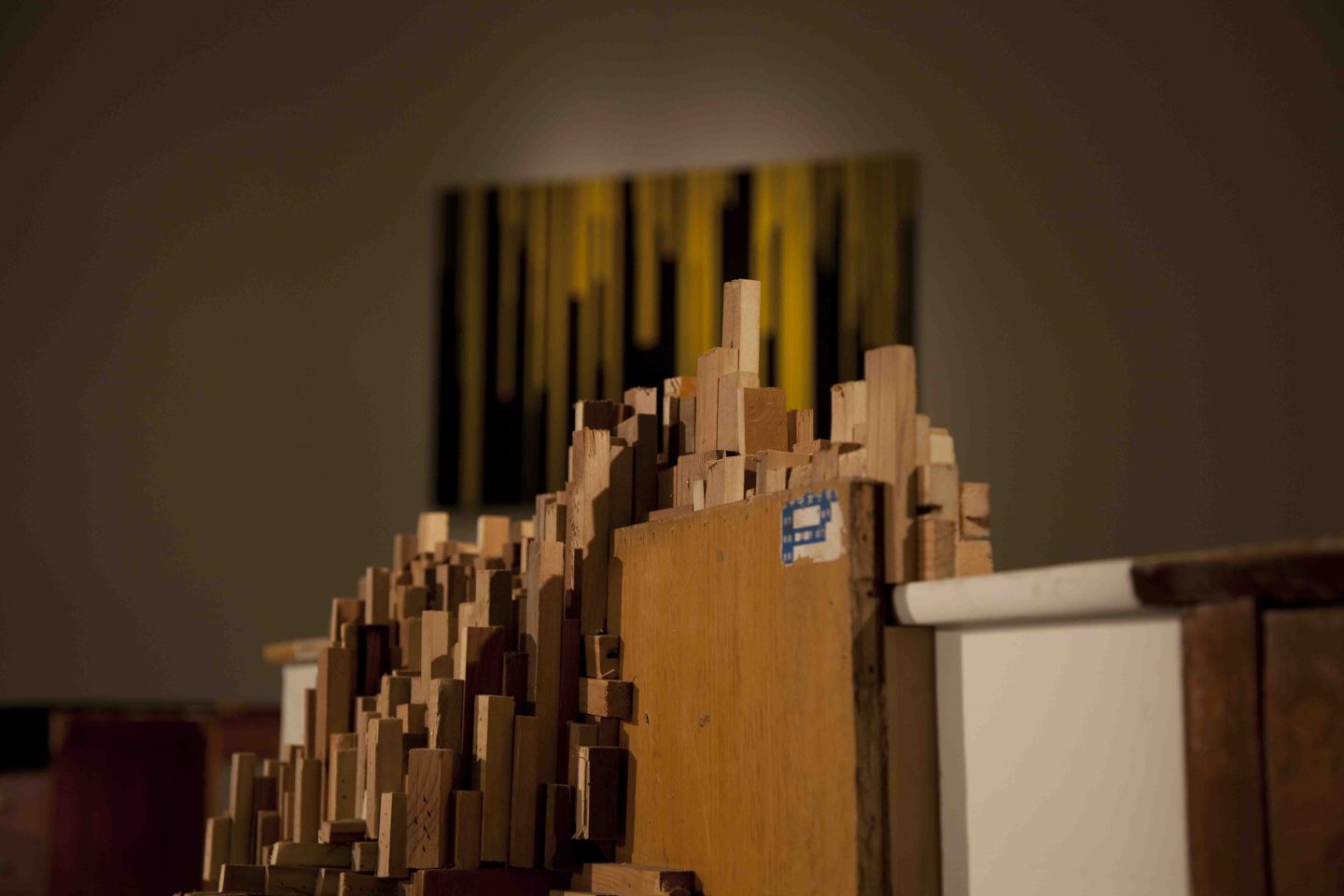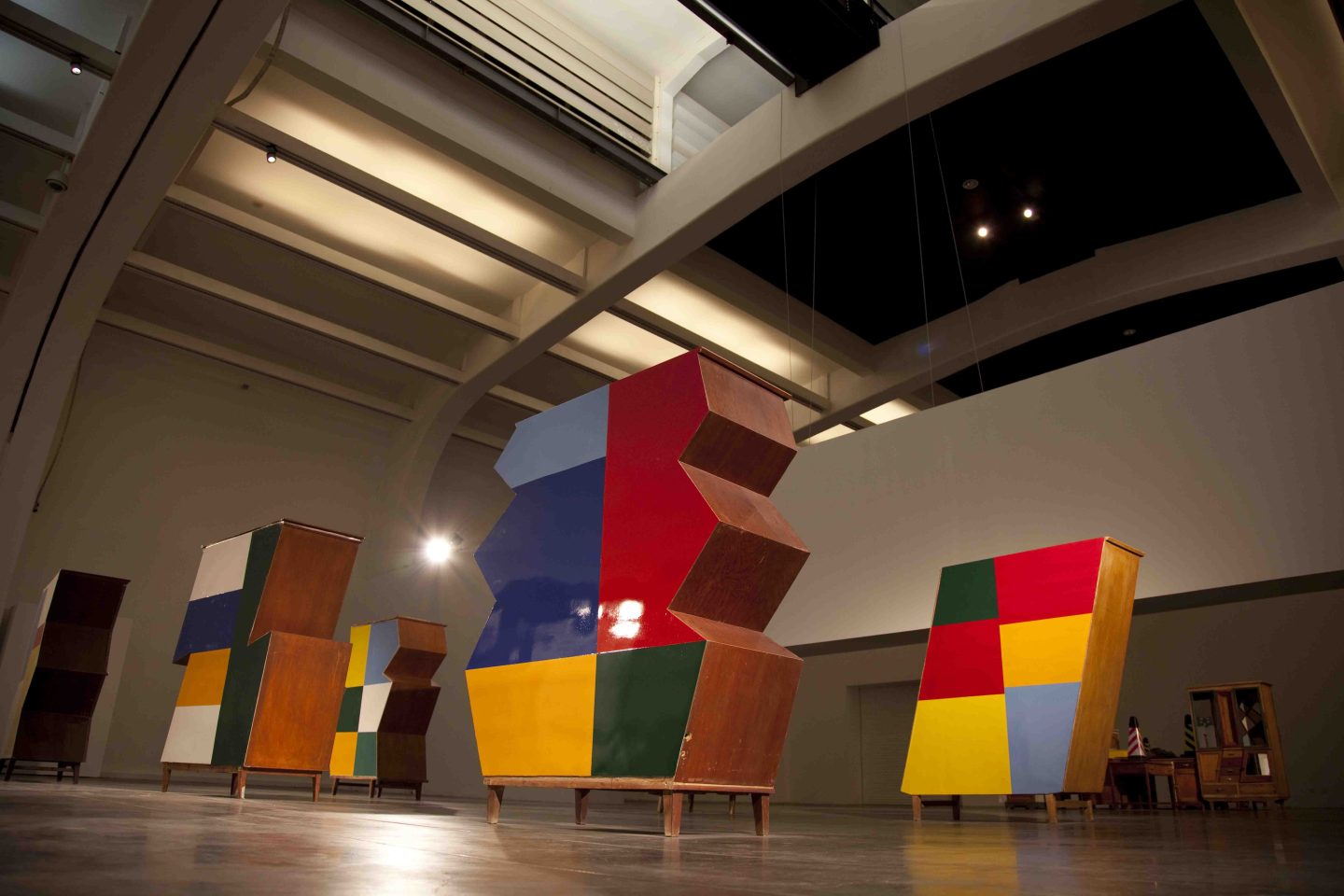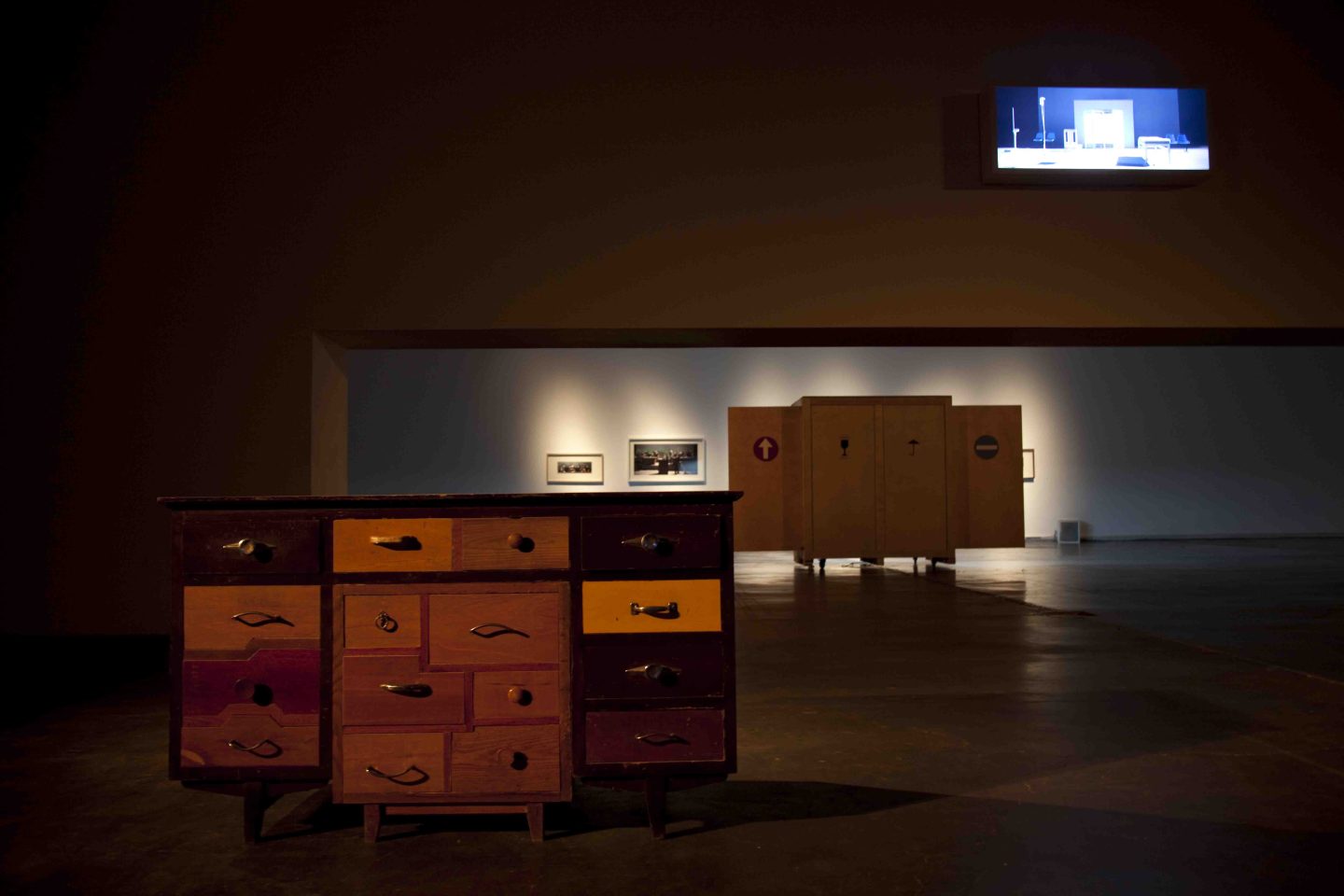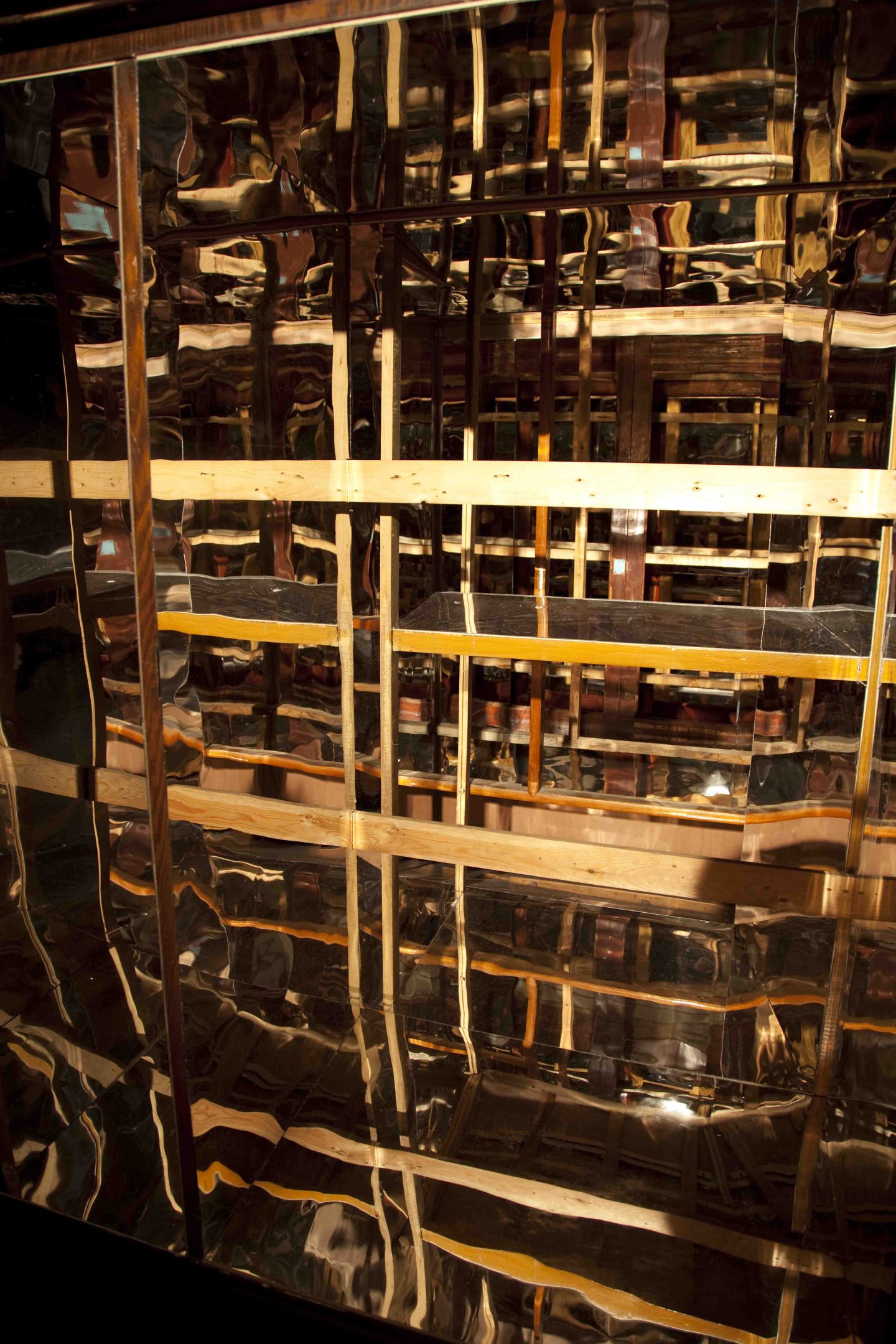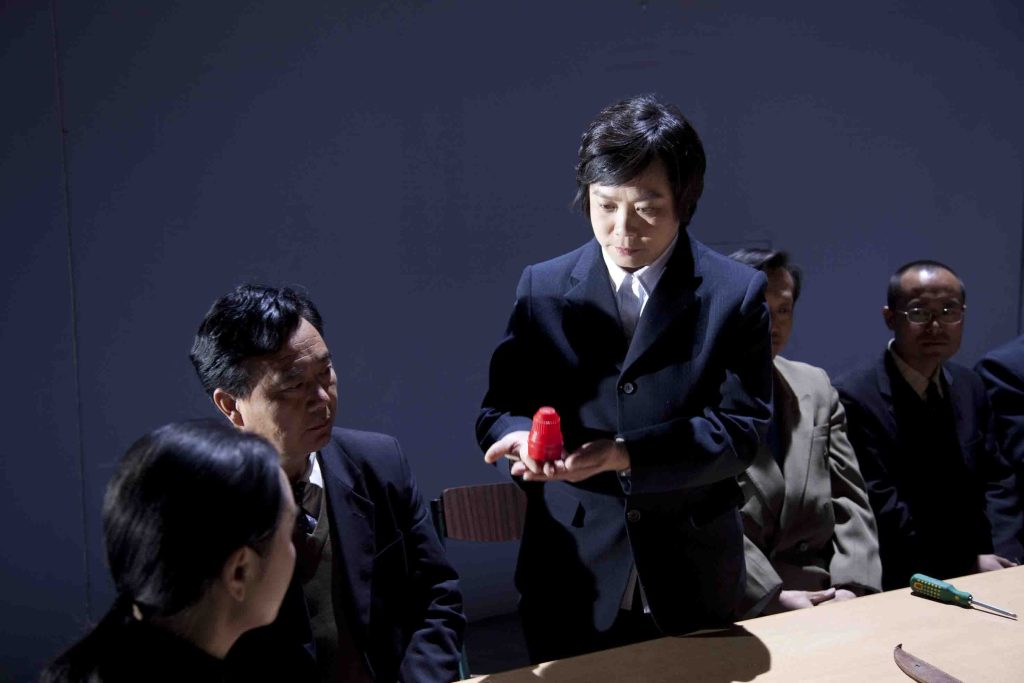Press Release

Pioneering video and multimedia artist Wang Jianwei is known for his conceptually complex, multi-faceted explorations of the contemporary Chinese reality. Using elements of interactive theatre, philosophical inquiry, artistic methodology and “scripted accident”, he seeks to illuminate the in-between – that poorly-defined grey zone – where most of us live, and where most of the really interesting things happen.
In “Yellow Signal”, Wang Jianwei’s first solo show at the Ullens Center for Contemporary Art (UCCA) in Beijing, the familiar yellow traffic light is both signal and signifier, demarcating the territory between red and green, permission and prohibition. An exhibition designed specifically for UCCA’s Big Hall, “Yellow Signal” is an evolving process, an ongoing exhibition that unfolds in four separate chapters over a period of three months. One of Wang Jianwei’s motives for choosing such structure was a desire to merge the artist’s studio with the exhibition hall, and to show how his personal artistic process parallels the course of the exhibition as a whole. It is a usually revealing look at the daily progress of a working artist, with glimpses of the mistakes, missteps and calculations made along the way.
The themes of “Yellow Signal” are many, the media and methods diverse. The initial chapter – eight large video projections depicting the “social organism” and starring 200 performers from various walks of life – is followed by even more ambitious chapters: an enormous installation of basketballs, nets and backboards painted as fractured national flags; a series of “dysfunctional furnishings”; even a modern update on Bentham’s Panopticon. While the phrase “everything but the kitchen sink” may come to mind, Wang Jianwei throws in the sink as well – two large communal sinks containing hidden dioramas of a basketball court and a political meeting hall. In the frustrating, dysfunctional, seemingly impossible spaces that Wang Jianwei creates, the sociopolitical subtext is always clear, but the message is ambiguous. At every step of the way, he forces us to doubt the evidence of our senses and question our assumptions. For Wang Jianwei seeing is not believing, because everything we see could be fake. Then again, maybe not: as this artist has said before, when everything around us is fake, then the fake becomes the only truth.
In “Yellow Signal”, as in all of his work, Wang Jianwei continues to defy expectations, transgress boundaries and reveal the fascinating ambiguities of contemporary Chinese life.
——Jérôme Sans Director, Ullens Center for Contemporary Art
About “Yellow Signal”
Wang Jianwei
When the yellow signal comes face to face with its two rightful opponents, red and green, it signals the termination of the given right of green, and the negation of the given right of red. It is only when the other two lose their monopoly on dominance that the yellow signal can gain its rightful place as a legitimate state of “in-between”. In its dual role as obstacle and intermediary, the yellow signal transforms restriction and delay into a tangible, recognizable “object”.
As both a symptom and a sign, “Yellow Signal” offers us an alternative way of seeing and understanding. We attempt to establish a contradictory and confusing setting whose constant state lies somewhere between permission and prohibition, activity and passivity. Will repeated interruption and modification to this setting cause it to become a collection of disparate and incompatible elements, a community incapable of merging? Or will it coalesce into a “yellow signal community”?
January 18th, 2011
Artworks
Ah, Mes Amis
Multimedia Theater
